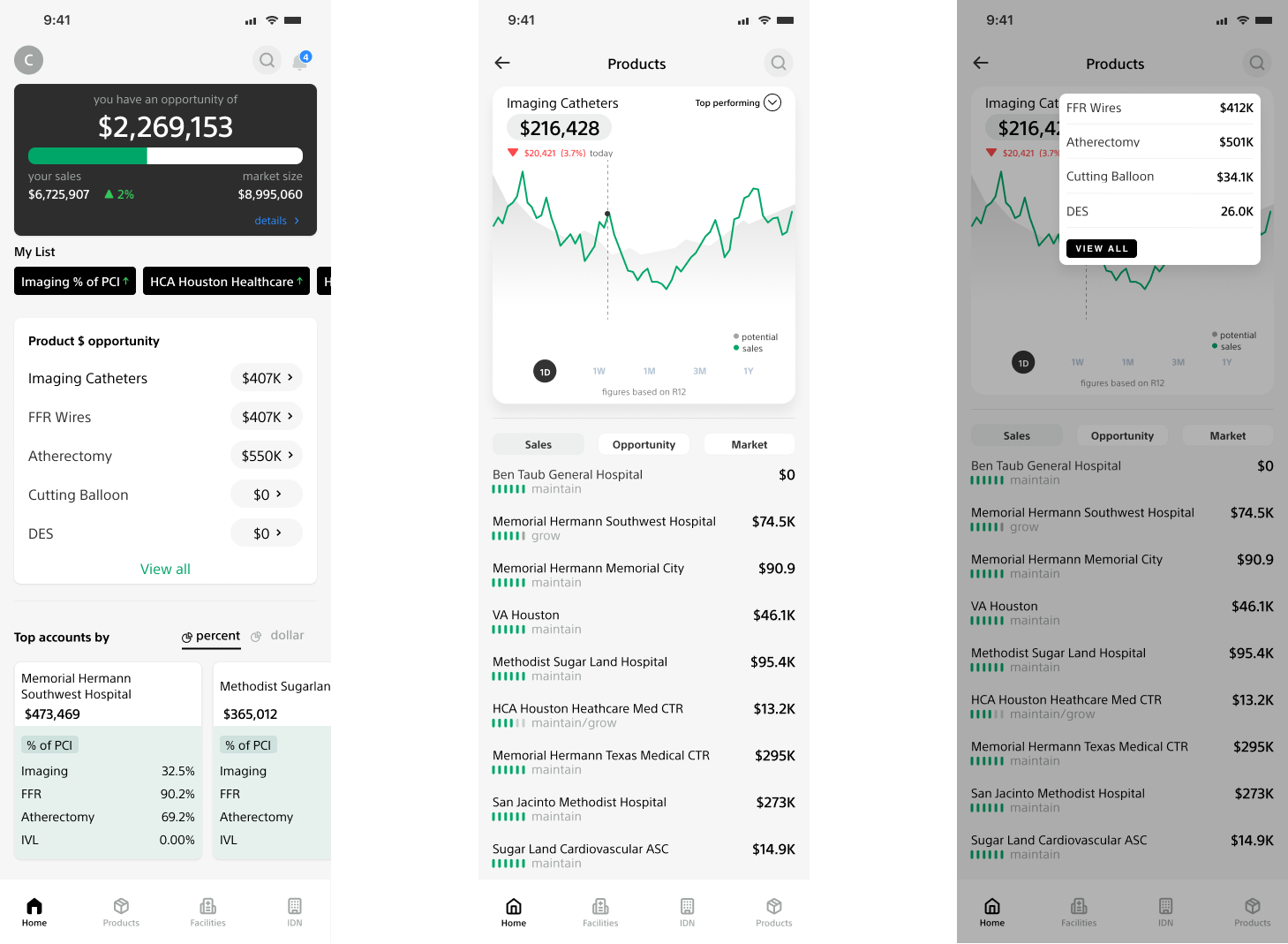As the lead Product Designer for the CTAP app, I conducted extensive user research to understand the needs, challenges, and preferences of medical representatives who would be using the app. This involved engaging with users through interviews, surveys, and focus groups, where they shared their experiences, pain points, and suggestions for improvement.

I conducted extensive user research to understand the needs, challenges, and preferences of medical representatives who would be using the app. This involved engaging with users through interviews, surveys, and focus groups, where they shared their experiences, pain points, and suggestions for improvement.

Leveraging insights from the research phase, I developed an intuitive user interface that prioritized ease of use and accessibility:

I developed wireframes that outlined the structure of each screen, ensuring that the layout would facilitate easy navigation and quick access to critical information. These wireframes were iteratively refined based on user feedback to optimize the user experience.

User-Centric Design: I focused on creating a user-friendly interface that ensured reps could quickly navigate the app and access the necessary information without friction. Streamlined Navigation: I carefully crafted the user flow to minimize the number of steps needed to perform key tasks, such as viewing potential sales opportunities or accessing hospital profiles. Data Visualization: I collaborated closely with a Tableau developer to transform complex market data into easily digestible and actionable insights for reps.



The user research played a crucial role in shaping the CTAP app, ensuring it met the practical needs of the medical representatives it was designed to support. By focusing on the actual experiences and challenges faced by the reps, the app was able to deliver a more effective, user-centric tool that improved their chances of success in the competitive healthcare market.